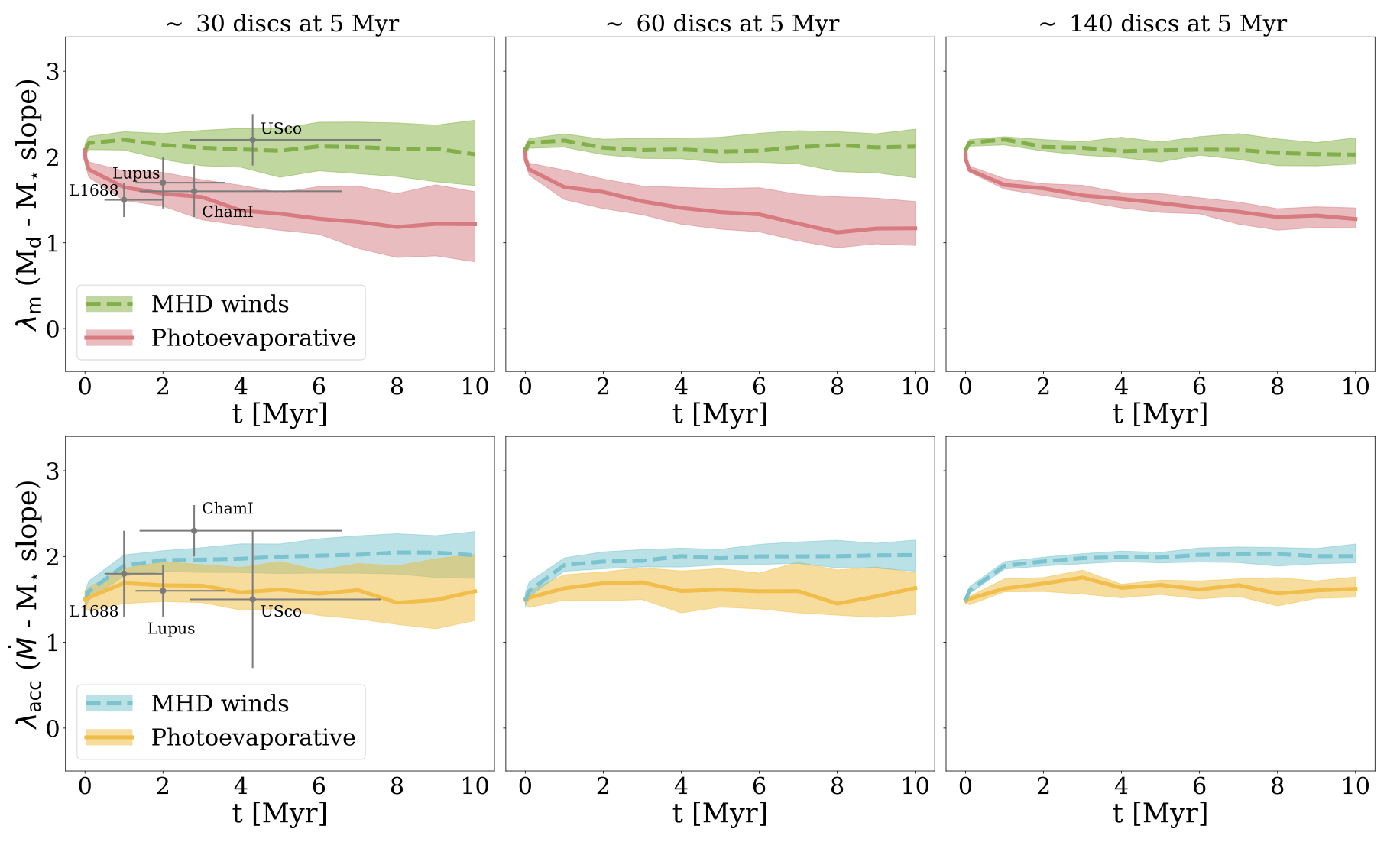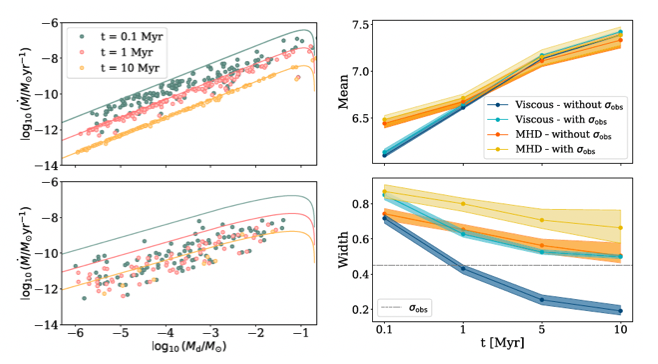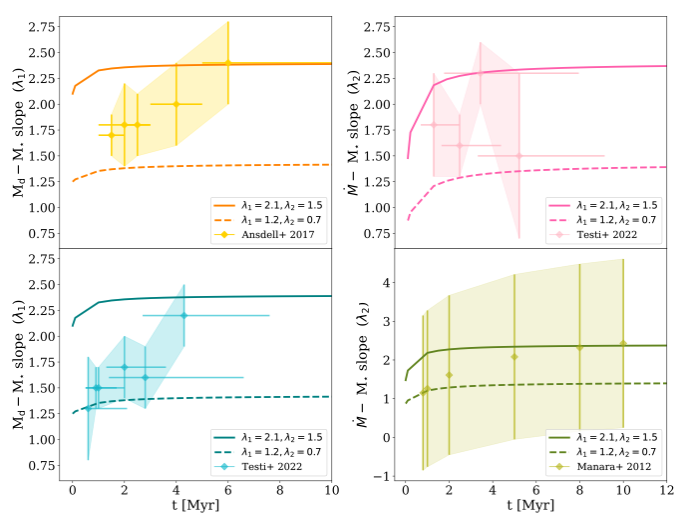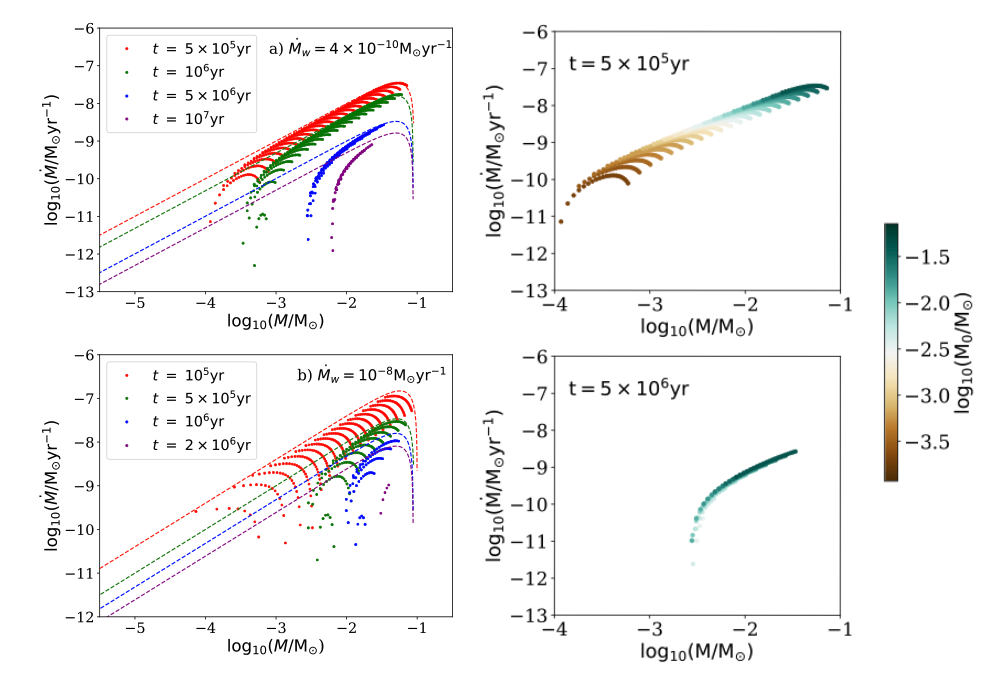My main research interest is protoplanetary discs, the environments where planets form. I am particularly keen to understanding the physical mechanisms that drive their evolution and consequent accretion of material onto the central protostar. To investigate this, I mostly rely on simulations (see the section Diskpop below) and analytical calculations, that allow us to test our theoretical expectations once compared with the observational data. Below, you will find a short description of the main projects I am currently working on, as well as a selection of the past ones. Here you can find the list of the publications I lead or contributed to.
Diskpop and popcorn

A significant part of my research relies of disc population synthesis, which I perform using the Python 1D code Diskpop and its own output analysis library, popcorn. I am one of the main active developers of both codes, that were released in Somigliana et al. (2024). You can find the Diskpop documentation in the Diskpop section.
Viscous vs MHD evolution: the disc properties-stellar mass correlations
In the third project of my PhD I continued to explore the differences between the viscous and magnetohydrodynamics wind-driven evolutionary paradigms, tackling the disc properties-stellar mass correlations. I found that the time evolution of the slopes of these correlations is impacted by the accretion process, however the different behaviour can only be appreciated with large enough (~300 discs) samples. You can read more in Somigliana et al. 2024.

Viscous vs MHD evolution: the distribution of disc lifetimes

In the second project of my PhD I started tackling the impact on disc evolution of the paradigms of viscosity and magnetohydrodynamics disc winds. In particular, I focused on the evolution of the distribution of the ratio between the disc mass and the accretion rate, a quantity often referred to as 'disc lifetime'. I found that both the theoretical spread and skewness of the distribution are significantly model-dependent: once convolved with the observational uncertainties, the difference in the spread remains appreciable, providing a novel way to distinguish between the two evolutionary models. This work is published in ApJL (Somigliana et al. 2023).
Evolution of the disc properties-stellar mass correlations
In the first project of my PhD (started during my Master's thesis, supervised by Prof. Giuseppe Lodato at the University of Milan and Dr. Giovanni Rosotti at the University of Leicester) I performed an analytical and numerical study of the observed power-law correlations between the stellar mass and the disc properties (mainly disc mass and accretion rate). I assumed the correlations to hold as initial conditions and analysed the impact of pure viscous evolution, finding that the power-law shape is maintained while the slope are meant to reach the same value after a long enough time. This can happen either because they both increase, they both decrease, or they remain constant depending on their initial value. The observed increase in the slopes (Ansdell et al. 2017) can be explained if the initial correlation between the disc and the stellar mass is steeper than that between the accretion rate and the stellar mass. You can read more in Somigliana et al. 2022.

Impact of internal photoevaporation on disc isochrones

In my Bachelor's thesis, supervised by Prof. Giuseppe Lodato at the University of Milan, I studied the impact of internal photoevaporation on the so-called protoplanetary disc 'isochrones' (i.e., the curves described by a population of objects of the same age in a chosen plane) in the disc mass-accretion rate plane. I worked with an embryonal version of Diskpop, written in Fortran 95 (!), and included the photoevaporative UV and X prescriptions of Clarke et al. (2001) and Owen et al. (2012) respectively. Internal photoevaporation acts as a disc dispersal mechanism and therefore plays a crucial role in viscous evolution, which would otherwise generate discs with infinite lifetime. I found that photoevaporation reduces the accretion rate for discs of a given mass with respect to the viscous counterpart: this effect modifies the linear shape (in the logarithmic plane), of isochrones, introducing a 'bending knee' at accretion rates corresponding to the mass-loss rate. This introduces a spread in accretion rates, that cannot be explained with purely viscous evolution. Moreover, I found that less massive discs are preferentially removed; this leads to the counterintuitive effect of an increase of the average disc mass over time. You can read more about this in Somigliana et al. 2020.